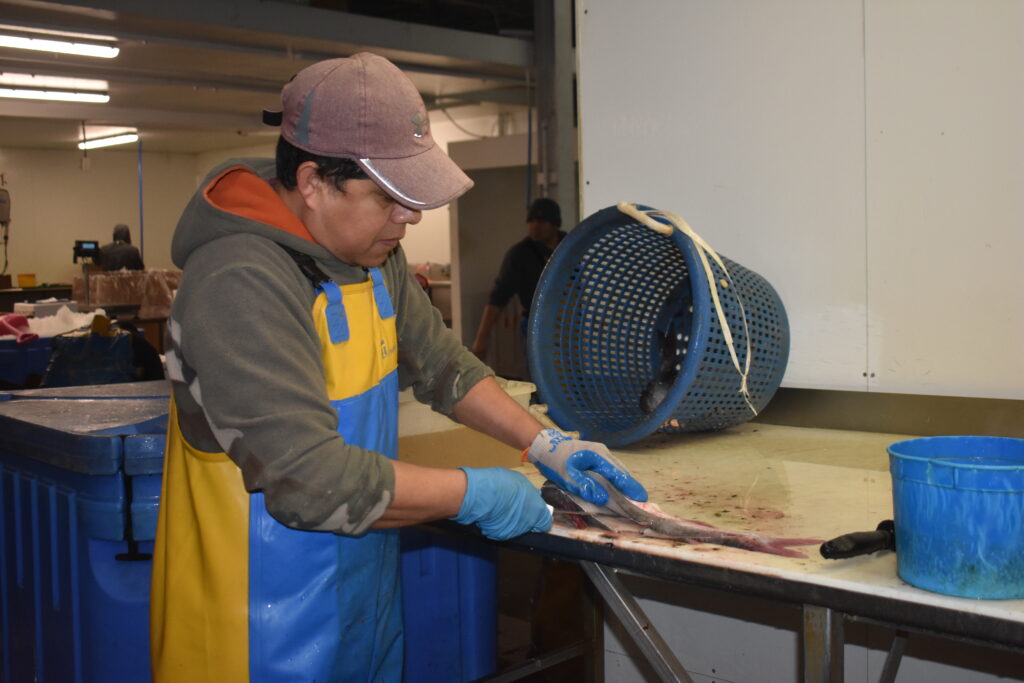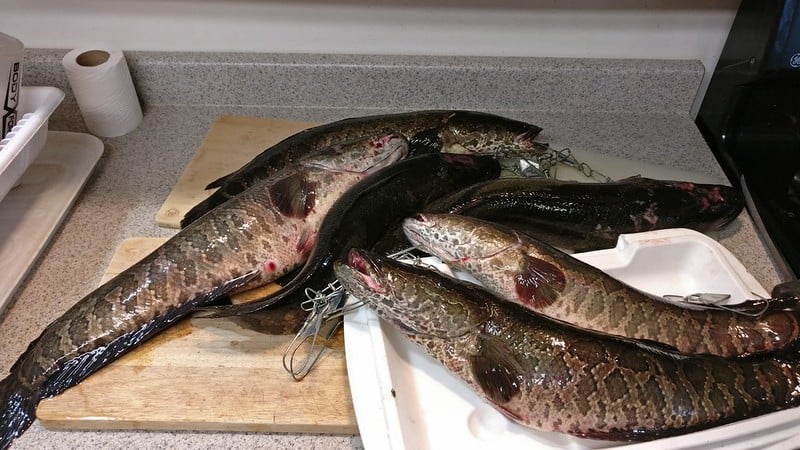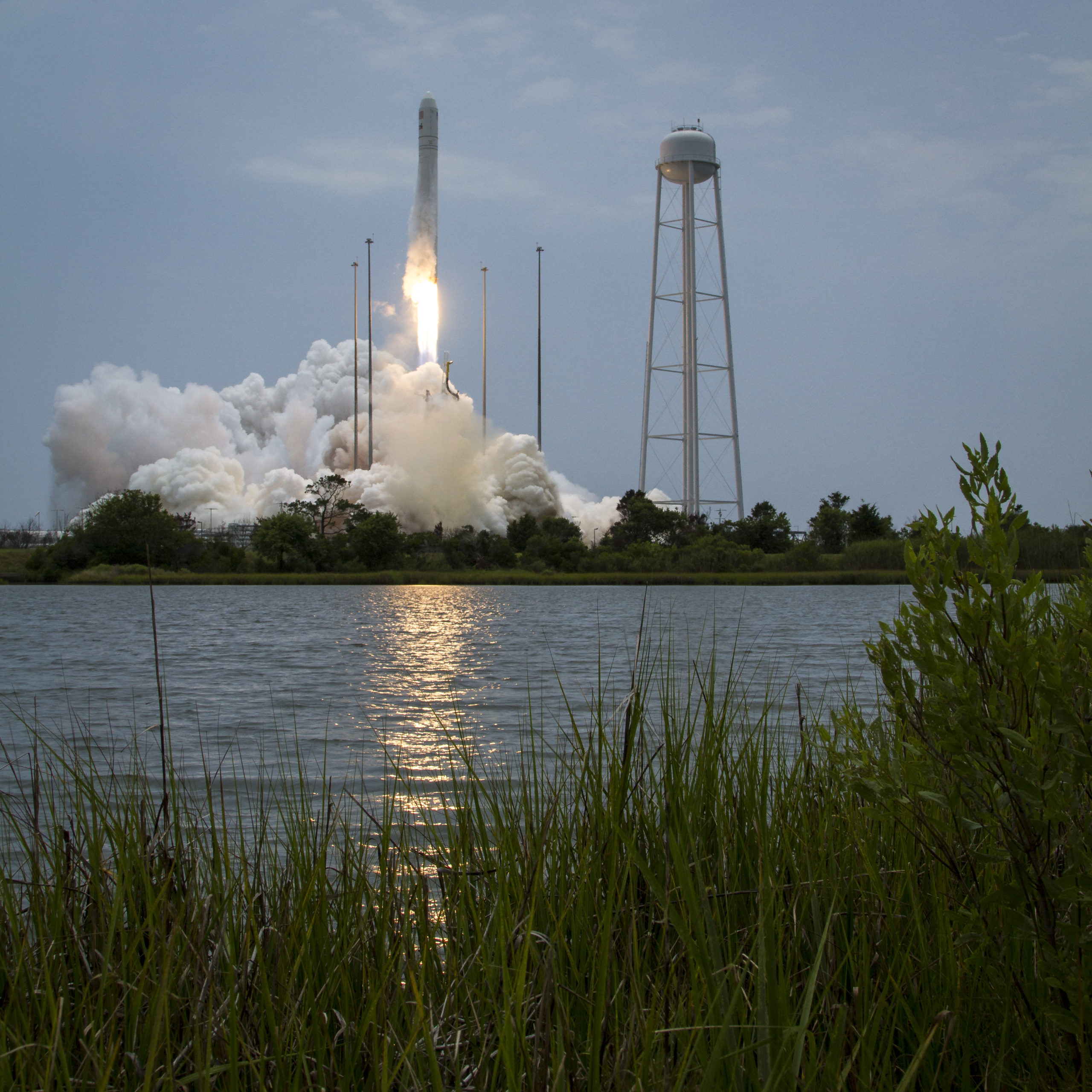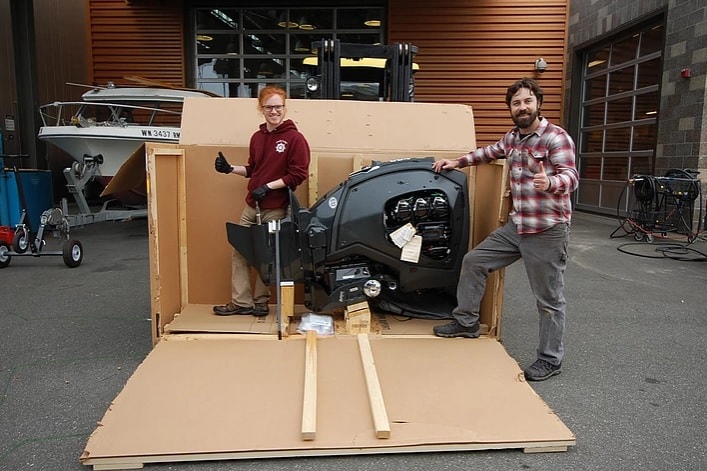The Commonwealth of Virginia is putting its money where its mouth is when it comes to getting blue catfish onto the menu and out of the Bay, funding a blue cat processing operation on the Middle Peninsula.
Virginia Gov. Glenn Youngkin has awarded a $250,000 blue catfish infrastructure “reimbursable” state funded grant to Sea Farms, Inc. of Hayes, Va., which will enable the firm to purchase a blast freezing system and expand its storage freezer capacity.
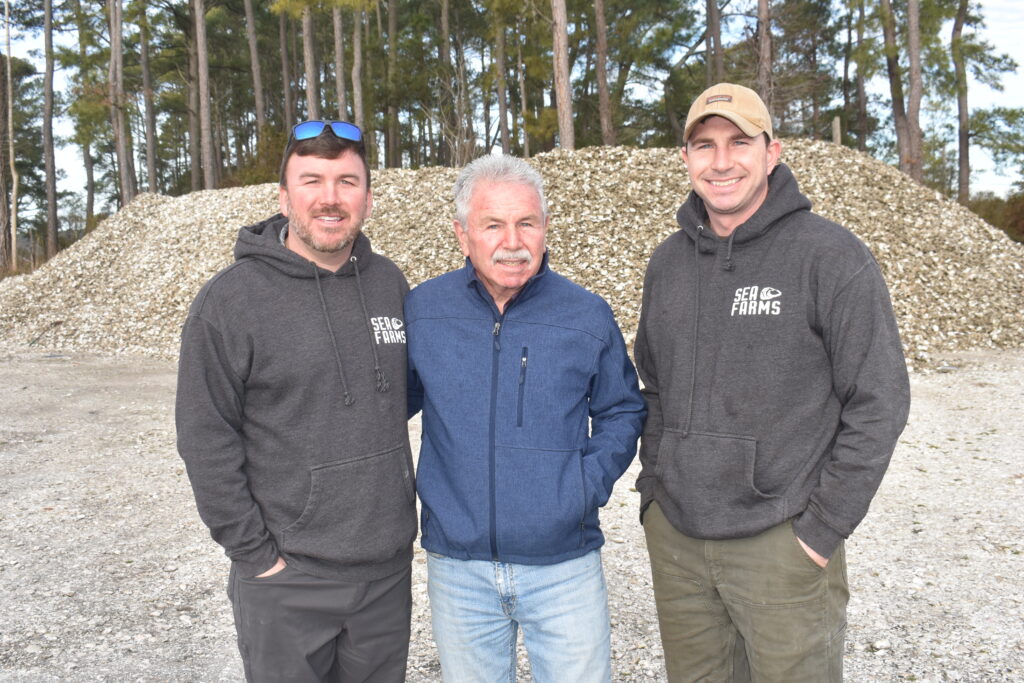
During the 1970s and 80s blue catfish were introduced to the James, Rappahannock and York river basins as a new recreational fish by the Virginia Department of Wildlife Resources. Blue cats are native to Mississippi, Ohio and Missouri rivers.
The catfish quickly spread throughout the Chesapeake Bay watershed into nearly every major tributary and are now being seen in North Carolina waters too. Blue catfish eat shad, herring, striped bass, menhaden, clams and blue crabs and there is now concern that the large catfish population are having a detrimental impact on the populations of these species.
The state of Virginia is encouraging the growth of a commercial blue catfish fishery to combat that negative impact. The state legislature voted at its last session to allocate a $250,000 grant to further expand the fishery.
There are currently four USDA certified blue catfish “cutting” houses in the state. Sea Farms Inc. has been one of those USDA approved processing houses since 2018.
“We are excited about receiving the grant,” said Chris Sopko, Sea Farms Inc. Vice President of Operations. “It is a reimbursable grant which means we have to purchase the equipment, pay for it and then request funding from the state up to $250,000. We plan to use the grant funds to purchase a blast freezing system and to expand our freezer capacity for storage of large quantities of catfish fillets.”
Sopkos said that the challenge to successfully expand the state’s blue catfish processing capacity is in developing sales and markets that will sustain the processing growth.
Sopkos said that his firm has a plan to offer bulk catfish fillets to public and private school cafeterias and to the state’s prison systems as a way to expand that market.
A blue catfish House Bill 1135 that passed on the floor of the house, 93-4, on Feb. 8, specifically directs the Department of Agriculture and Consumer Services, in collaboration with certain stakeholders, to . . . evaluate strategies to reduce the negative ecological effects of blue catfish and to research ways to increase sales and marketing of blue catfish.” The Bill was sponsored by Delegate Keith Hodges of Urbanna, Va..
Hodges said that he is going to recommend that the House allocate another $250,000 from the coming fiscal budget to fund a second blue catfish grant. He also plans to propose $500,000 in grant funds out of the next fiscal year state budget. According to Hodges, Gov. Youngkin’s 2024-25 budget proposal has an additional $250,000 for catfish grant funds.
On Sept. 6, 2023, the Virginia General Assembly voted down a proposal to invest $2 million in a grant program to establish the Catfish Industries Development Program but instead voted to start off the program with $250,000 in state seed monies.
“I see this first grant to Sea Farms as just the beginning of the state moving forward with a successful blue catfish fishery that will help control the population and create a profitable fishery for watermen and others on the bay,” said Del. Hodges.

